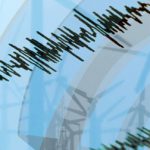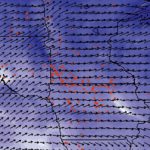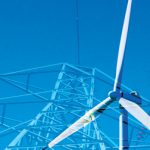The world continues to pursue wind as a source of low-cost, renewable, zero-emissions electricity. With worldwide annual growth through 2020 expected to average 22 percent, wind becomes a significant percentage of total electricity sourcing. As the amount of electricity supplied by wind reaches 15 percent and higher in some areas—with others deriving 50 percent from wind—the reliability of this resource becomes critical.
The issues caused by varying winds and the time of use versus generation have been well documented. However, the reliability of wind turbine generators connected to weak electrical grids has received less attention. With wind farms typically found in remote locations, a weak grid to which turbines are connected can have severe effects on the wind turbines. Grid voltage dropouts can frequently occur, and the wind turbine must stay connected—i.e., controls and output must be maintained—despite perturbations in the grid.
Several occurrences of grid disconnect have been experienced in recent years. In the case of a grid disturbance, the wind turbines would disconnect from the grid as a safety precaution to protect the turbine. While these events may have occurred previously, their effect was relatively minor since wind generation was not a major portion of the overall electricity supply. At base load conditions, which typically occur at night, wind may provide 50 percent of the total power demand, so a disconnect is not an acceptable reaction to a transmission disturbance.
Typical wind turbine generator designs are shown in Figure 1. Grid disturbance problems can occur along the main power line or in the controls, which are powered directly from the grid. Along the main power a voltage drop or spike can cause an over-current, over-voltage, or over-speed, all of which could damage the generator. A voltage dropout in the power to the controls can also cause a grid disconnect.
Grid Requirements: Low Voltage Ride Through
Technical requirements for low voltage ride through vary by country and by grid operation. A few key requirements are shown in Figure 2. Typical dropouts up to 0.625 seconds must be fully covered and full generator output returned two to three seconds after recovery of the grid.
Varying blade angle, i.e. pitch control, can help control generator speed in extreme wind conditions, and the applicability of ultracapacitors for this function has been described elsewhere. While pitch control does effectively protect and optimize the wind turbine, it does not help with grid disconnect issues. When a low voltage event occurs this is effectively a low resistance to the generator, which leads to an over-speed situation. The reaction of the wind turbine is to use pitch control to slow down and eventually bring the blades to a halt, causing a disconnect from the grid. Pitch control is very effective in its purpose to protect a catastrophic failure of the wind turbine. We are left with electronic solutions to low voltage ride through to avoid this disconnect.
Solutions: Passive Devices
Crow bar devices and resistor banks have been used for low voltage ride through and to protect the wind turbine. However, the energy they consume is wasted. They are effective due to their ability to provide active and reactive power, but they are quite limited in the timescale that can be covered. They require sophisticated electronics and software, which can run in the $30,000-$40,000 range per turbine.
Static synchronous compensators (STATCOM) have recently come into use for power quality purposes. They are effective at providing active and reactive power as required by the grid. However, their particular effectiveness is in the short duration of a few cycles. Sizing a STATCOM to cover a few seconds becomes economically unfeasible.
Ultracapacitor energy storage can provide ride through for the main power conversion as well as the control electronics. They are scalable in time and power, but can cost effectively provide power from seconds to a few minutes. They have long been used as backup power for pitch control, so their reliability and lifetime are proven in similar applications and environments. Additional benefits of ultracapacitor energy storage include:
• Long life—typically in the 15 year range, depending upon operating voltage and temperature;
• Green solution—recyclable materials, no toxic chemicals;
• Scaleable—with modular designs, systems can be scaled up depending upon the wind turbine output;
• Maintenance free—capacitors do not require any regular maintenance and can be fully discharged for safe handling, and;
• Easy monitoring—simple discharge time measurements can be used to determine system health along with voltage monitoring.
Ultracapacitors function similarly to other types of capacitors, but they have tremendous surface area (3,000 m2/g) and molecular scale plate spacing (1 nm). These parameters allow their use as an energy storage device and essentially a DC component. They cannot be used in typical filtering applications. With no moving parts or chemical reactions, they have lifetimes up to 15 years, and potentially longer with predictable degradation and simple monitoring techniques. End of life is defined as 80 percent of rated energy storage capacity (measured as an 80 percent reduction in capacitance) and 50 percent of rated power capability (measured as a doubling of the rated equivalent series resistance, ESR). With this in mind, a system can be easily sized using a 1.5MW wind turbine as an example.
Required Power: the maximum power required is determined peak power output. In the extreme, this is the rated 1.5MW specification. In the assumption that, on average, a wind turbine operates at 80 percent output, the power rating is:
Prequired = 1.5 MW x 80% = 1.2 MW
Required Energy: using the China grid requirement, the wind turbine must support a 0.625 second dropout plus an additional two seconds of recovery. The ultracapacitors must provide voltage support for this entire period. Additionally, the power output of the wind turbine is assumed to be constant power.
Erequired = Prequired x (0.625 seconds + 2 seconds) = 3.15 MJ
System Configuration: a system must be configured to meet both the power and energy requirement. Capacitor system power and energy is calculated as follows:
Pcap = 0.12 x V2 / ESR
Ecap = ½ C x V2
Additionally,
ESRsystem = ESRmodule x Ns / Np
Csystem = Cmodule x Np / Ns
Where Np = number of modules in parallel
Ns = number of modules in series
The capacitor voltage drops as it is discharged, the energy output is the difference between the starting energy at Vcharged and the ending energy at Vdischarged. The value for Vdischarged is dependent upon the power electronics between the capacitors and the DC bus. In this example, we assume that the Vdischarged can be as low as 30 percent of Vcharged, the normal DC bus voltage. A common wind turbine ultracapacitor module is rated at 75V, 94F, and 13 mohm. Assuming the DC link operates at 450V, Ns = 6. We can now calculate a system configuration.
For power requirements,
1.2 MW = 0.12 x 4502 / (0.013 x 6 / Np)
Then Np = 1.2 MW / (0.12 x 4502) x (.013 x 6) = 3.85 → 4
For energy requirements,
3.15 MJ = ½ x (Cmodule x Np / 6 ) x (450-150)2
Then Np = 3.15 MJ / (½ 94 / 6 x (450-150)2 ) = 2.2 → 3
Thus, an example system for a 1.5MW wind turbine will contain six modules in series with four such strings in parallel. The calculations above are an example only and detailed sizing calculations should be made for each system and region. However, ultracapacitor energy storage would cost $20,000-$35,000 per wind turbine, less than the $30,000-$40,000 reported for other solutions which require a combination of electronics and software. With a demonstrated reliable history of installations in the nacelle for pitch control, ultracapacitors have proven their value as a maintenance-free energy storage solution. Figure 3
Market Potential
Although wind energy today contributes approximately 2 percent of the world’s total electricity supply, it is estimated that its contribution will grow to over 4 percent by 2020. Therefore, within a decade another 230GW of new capacity is expected to be installed, which represents a market potentially worth $250 billion. Ultracapacitors will play a major role in this expansion and have already been installed in approximately 20,000 wind turbines. While the requirements for LVRT will grow along with overall wind installation, the rate of penetration will be determined by the percentage of total electrical energy coming from wind turbines in local regions and the frequency of grid disconnects causing reliability issues. Figure 4
Other requirements will also be place upon wind energy for “firming” of its output to reduce short-term variability. Grid operators and those responsible for reliability will place specifications on wind generation to control ramp rates and short-term spikes or sudden drops in ouput. Ultracapacitor energy storage will play a role in these functions as well as LVRT to provide cost effective, reliable solutions to grid reliability with renewable resources.








































